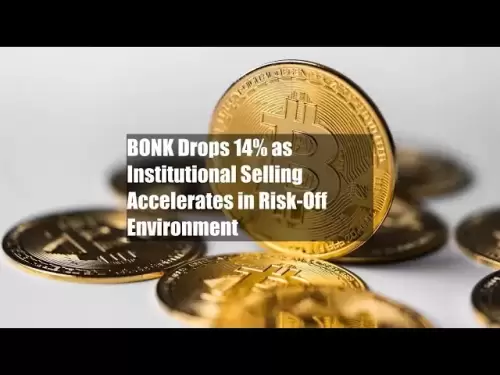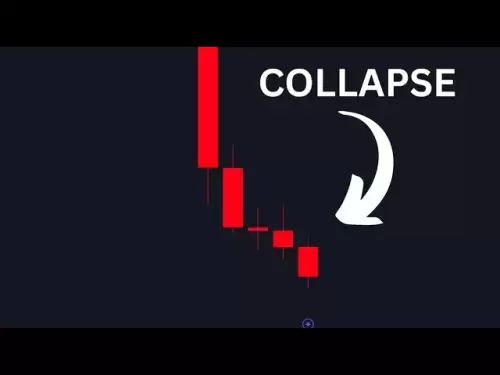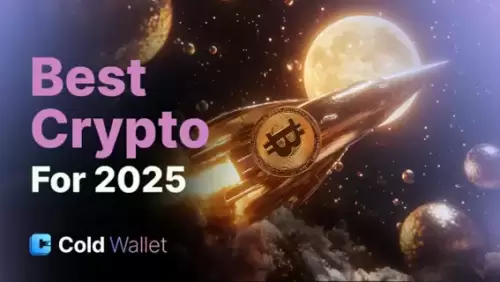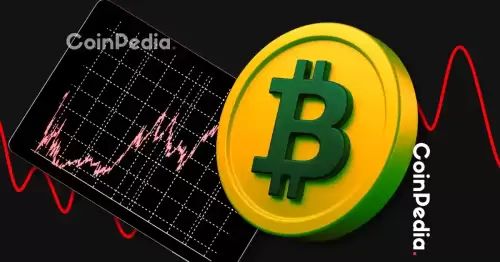 |
|
 |
|
 |
|
 |
|
 |
|
 |
|
 |
|
 |
|
 |
|
 |
|
 |
|
 |
|
 |
|
 |
|
 |
|
Cryptocurrency News Articles
The 5 Largest Cryptocurrency (Crypto) Coin Collapses in History
Apr 18, 2025 at 03:14 am
Since the entrance of altcoins, the crypto market has seen an explosion of creativity, new strategies, and spectacular failures. As with any new technology, there are growing pains associated with innovation.

Since the entrance of altcoins, the crypto market has seen an explosion of creativity, new strategies, and spectacular failures. As with any new technology, there are growing pains associated with innovation.
Now, whether these pains originate from bad programming, management, security, or timing is what makes coin collapses so interesting. Here are the 5 largest coin collapses in crypto history.
1. LUNA/UST – The $40 Billion Collapse That Shook DeFi
LUNA entered the market in January 2018. The project was unique in that it introduced a high-performance blockchain, the LUNA token, and an algorithmic stablecoin dubbed UST. This combination promised to be a game changer for DeFi users who saw the option to easily dodge market volatility as a big plus alongside the Terra ecosystem's offerings.
An algorithmic stablecoin differs from traditional versions in that it doesn’t have fiat currency reserves or off-chain assets backing it. Instead, a mathematical equation will adjust a reserve filled with another cryptocurrency to keep the stablecoin pegged to its value. In this instance, UST had a 1:1 dollar peg.
Crypto Collapses
Everything was going as planned until May 2022, when sudden market volatility caused UST to lose its peg. Unfortunately, the market volatility also affected the value of the tokens' underlying asset, LUNA. This shift in value meant the algorithm was unable to meet the reserves needed to keep the token pegged at its $1 value.
Recognizing the time it took for the project to regain its peg, traders began to worry about LUNA and its operations. They began selling LUNA in droves. In response, the developers issued more tokens. This maneuver only led to hyperinflation, and within hours, the writing was on the wall.
Consequently, the LUNA/UST crash was a massive kick in the charts to traders who saw the project lose $40B in market capitalization in less than 24 hours.
2. Mantra – Ongoing Allegations of Insider Dumping
The Mantra OM crash is the most recent token collapse to make the list. This high-level fiasco is still under investigation as the project's developers claim that market manipulation was to blame for the sudden 90% loss in value over 24 hours.
Mantra was touted as an enterprise-level Real World Asset ecosystem. RWA refers to transferring assets onto a blockchain. For example, you could tokenize your car by making the title a token. In this way, you have now created an RWA blockchain asset.
RWA token holders could transfer ownership of their assets as easily as tokens. They could also break large assets into smaller tokens, allowing more investors to access the market with less capital. All of these factors made the project a draw for RWA traders.
OM Token Price Crash Sparks Controversy
On April 13, everything changed for OM token holders when their Sunday morning was shattered by news of the token dropping from $6.30 to below $0.50 in value in hours. The losses happened so fast that many in the market claimed that some sort of insider trading or rug pull was involved.
These allegations were met with a response from the project's developers, who state that none of their tokens were sold. However, further investigation found that millions of OM tokens were shared with two community members. In response to the insider trading and member sales, the developers and alleged traders claim that the wallets are not associated with them in any way.
These two members methodically dumped their bags on centralized exchanges during the losses. These actions are confirmed by Binance and OKX. Both exchanges also noted that they had flagged OM token actions because they noticed an increased use of the token to secure lending.
The allegations against the developer continue to stack up. Some now believe this was a long, well-planned plot. They point out that the developers decided to switch from a limited supply token to a deflationary strategy. This maneuver allowed them to effectively issue double the tokens, which appear to have been used to take out loans. As more allegations come forth, both the crypto community and regulators await answers to account for the sudden drop in market cap from $6B+ to just around $681M.
3. Bitconnect – The Infamous $2.75B Crypto Ponzi Collapse
This next crypto collapse was one of the most spectacular ever to have occurred. The Bitconnect ecosystem entered the market in 2016 amid the crypto breakout year. The crypto market was seeing massive adoption at this time, and people were eager to participate in any way possible.
As a result, this desire led to an influx of scammers as the tech was still a mystery to most. Bitconnect entered the market as a crypto P2P lending service. Users could join and send their crypto to Bitconnect. They would receive BCC tokens in return. Their deposited funds would then be lent out to other users, and the interest would be paid
Disclaimer:info@kdj.com
The information provided is not trading advice. kdj.com does not assume any responsibility for any investments made based on the information provided in this article. Cryptocurrencies are highly volatile and it is highly recommended that you invest with caution after thorough research!
If you believe that the content used on this website infringes your copyright, please contact us immediately (info@kdj.com) and we will delete it promptly.






























































